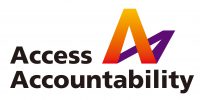Calling a witness to court to give a testimony is an important part of handling a legal case. Yet this procedure has various shortcomings. Aside from being expensive and time-consuming, in the context of human rights violations where witnesses are often victims, having to give a testimony can lead to secondary trauma. A sworn statement can serve as an alternative to having witnesses re-tell sensitive and/or traumatic accounts.
What is a Sworn Statement?
A sworn statement is a written statement of fact related to a legal proceeding. It is signed by the declarant to state that all the content is true, and that they acknowledge that the penalty of perjury may follow if they do not tell the truth. It is very similar to an affidavit, but unlike an affidavit, a sworn statement is not witnessed and sealed by a public official having the power to witness an oath (for example, a public notary).
Why is it important?
To maximize fairness and the likelihood of obtaining an accurate account in legal proceedings, individuals providing information related to the case will be called to the court as witnesses to give a testimony. This procedure ensures that the individuals can then be cross-examined by the opposing party. Therefore, if an individual is important to the case, it is preferable to have him or her attend the court as a witness.
However, this process can be expensive and time-consuming when, for example, the individuals reside overseas. Furthermore, if the witnesses are victims in the case, requiring them to give testimony in a public court about what happened to them can be traumatizing or upsetting. More importantly, cross-examination often involves an attack on the witnesses’ character to undermine their credibility. This experience may lead to secondary trauma, especially in cases involving human rights violations such as sexual assault and violations of human dignity. Replacing a testimony with a sworn statement is one means of avoiding this situation.
In addition, when human rights organizations approach witnesses in the field, they cannot foresee whether the witnesses will be available to attend the court trial later. It is therefore advisable to create a sworn statement at the time when you first have access to the witness. Also, recording a first-hand account of an incident when it is fresh in the mind of the witness can help paint a clearer picture than might be possible later on, as memories of the event becomes less clear.
Key features
1. Personal details of the declarant: name, age, occupation and address (additional information may be included if needed)
2. A detailed account of the incident(s):
- Date and time the incident(s) occurred
- Who was present
- Where the incident(s) took place
- What was said or done, and by whom
It is important to avoid hearsay evidence, but if necessary, include when, where and what the witness reports having been told by others.
3. Endorsement paragraph – a statement declaring that the content in the sworn statement is true, acknowledging that it is made for use as evidence in court and is subject to penalty for perjury.
4. Signature of the declarant
5. Date
Sample Template
| Sworn Statement of [ ]
My name is [ ]. I am [ ] years old and am working as a [ ]. I currently reside at [ ]. [ A detailed account of the incident ]. I declare that, to the best of my knowledge and belief, the information herein is true and complete. I understand this statement is made for use as evidence in court and is subject to penalty for perjury. (Signature) Date |
*It should be adapted according to your context
References
“Guide For Providing Witness Statements To The Human Rights Commission.” ACT Human Rights Commission, 2009. http://www.hrc.act.gov.au/res/file/Witness%20Statement%20Guide%20March09.pdf
“How to Prepare A Sworn Statement” The Law Dictionary, https://thelawdictionary.org/article/how-to-prepare-a-sworn-statement/
Last Updated: August 2018
Author: Nova Pui Yan Tang
